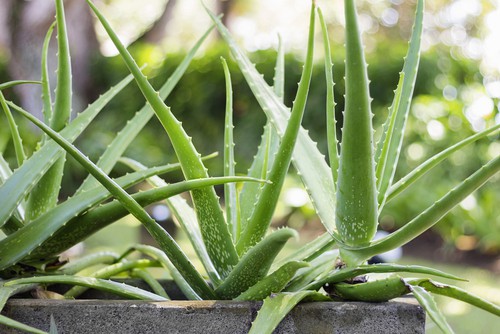Aloe vera is a popular succulent plant that is known for its medicinal properties and is commonly used in skincare products. It is a versatile plant that can thrive in a variety of conditions, but how cold can aloe vera plant tolerate?
Understanding aloe vera and its ideal growing conditions is essential to ensure that it remains healthy and thrives. Aloe vera is a tropical plant that prefers warm temperatures and does not tolerate cold weather very well.
The ideal temperature range for aloe vera is between 55-85°F, and it cannot survive in temperatures lower than 50°F due to its low cold tolerance.
Aloe vera requires special care during the winter months when the temperature drops. In this article, we will explore the temperature tolerance of aloe vera, how to care for it during the cold weather, and how to ensure that it thrives during the summer months.
We will also discuss indoor aloe vera care, growing and fertilizing aloe vera, and special care for aloe vera.
Key Takeaways on How Cold Can Aloe Vera Plant Tolerate?
- Aloe vera prefers warm temperatures between 55-85°F and cannot survive in temperatures lower than 50°F.
- Aloe vera requires special care during the winter months when the temperature drops.
- Understanding aloe vera and its ideal growing conditions is essential to ensure that it remains healthy and thrives.
Also don’t miss:
- How Cold Can a Snake Plant Survive?
- How Big Does a Habanero Plant Get?
- Why Do Plant Leaves Turn Upside Down?
Understanding Aloe Vera
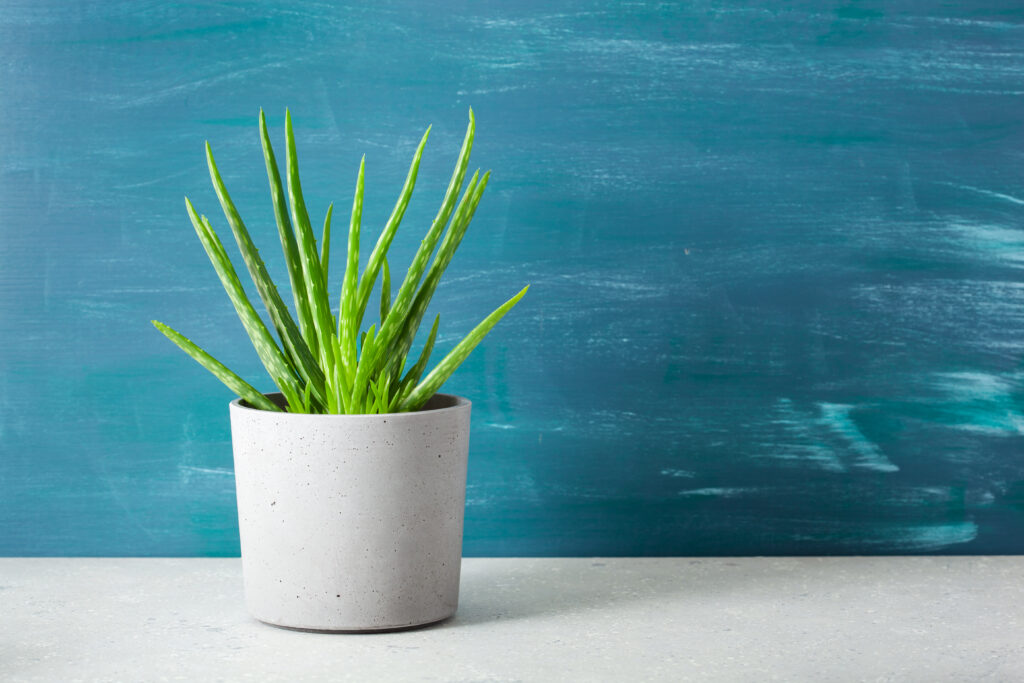
Aloe vera is a succulent plant that belongs to the Asphodelaceae family. It is a popular houseplant that is known for its healing properties and is often used as a natural remedy for various ailments. Aloe vera is native to the Arabian Peninsula, but it is now grown in many parts of the world.
There are over 500 species of aloe, but aloe vera is the most commonly known and widely used species. It is a hardy plant that can tolerate a range of temperatures, but it is sensitive to extreme cold.
Most species of aloe vera cannot survive temperatures below 25ºF (-4ºC) for several hours. Extremely low temperatures cause the gel-like fluid within the aloe’s leaves to freeze. Hard freeze destroys the plant’s cells and well tissues, causing it to die if left in the extreme cold for too long.
Aloe vera is an ideal house plant because it thrives in temperatures between 55 and 80 degrees Fahrenheit. These plants naturally retain plenty of water, making them intolerant to freezing temperatures. When the temperature starts to drop below 50 degrees Fahrenheit during winter, your aloe plant starts to struggle.
In addition to its temperature tolerance, aloe vera is also known for its healing properties. The gel from the plant is said to have numerous benefits, including reducing inflammation and promoting healing.
Aloe vera is often used to treat burns, cuts, and other skin irritations. It is also used in various cosmetic products due to its moisturizing properties.
Ideal Conditions for Aloe Vera
Aloe Vera is a hardy plant that can tolerate a range of conditions, but it thrives in specific environments. Here are some ideal conditions for growing healthy Aloe Vera plants:
1. Light
Aloe Vera plants prefer indirect light, but they can also tolerate direct sunlight. When grown indoors, they should be placed near a window that receives bright, indirect light. If grown outdoors, they should be placed in a spot that receives partial shade during the hottest part of the day.
2. Soil

Aloe Vera plants prefer well-draining soil that is slightly acidic. They do not like to be kept in soil that is too wet, so it is essential to ensure that the soil drains well. A mixture of sand and potting soil can provide the right balance of moisture and drainage.
3. Sunlight
Aloe Vera plants require plenty of sunlight to grow, but they can also tolerate low light conditions. When grown indoors, they should be placed in a well-lit room or under artificial light. When grown outdoors, they should be placed in a spot that receives at least six hours of sunlight per day.
4. Water
Aloe Vera plants prefer to be kept slightly dry, so it is important not to overwater them. They should be watered only when the soil is dry to the touch. When watering, it is essential to ensure that the soil drains well to prevent the roots from rotting.
5. Moisture
Aloe Vera plants prefer low humidity, in the range of 20-30%. They can tolerate higher humidity levels, but they may be more susceptible to disease in these conditions. It is essential to ensure that the soil is well-drained to prevent excess moisture from building up around the roots.
6. Drain
Aloe Vera plants prefer well-draining soil, so it is essential to ensure that the soil drains well. This can be achieved by adding sand or perlite to the potting soil. It is also important to ensure that the pot has drainage holes to allow excess water to escape.
7. Indirect Sunlight
Aloe Vera plants prefer indirect sunlight, but they can also tolerate direct sunlight. When grown indoors, they should be placed near a window that receives bright, indirect light. If grown outdoors, they should be placed in a spot that receives partial shade during the hottest part of the day.
8. Artificial Light
Aloe Vera plants can be grown under artificial light, making them ideal for indoor gardening. When grown under artificial light, they should be placed under a grow light that provides full-spectrum light. It is important to ensure that the light is not too close to the plant, as this can cause the leaves to burn.
Temperature Tolerance of Aloe Vera
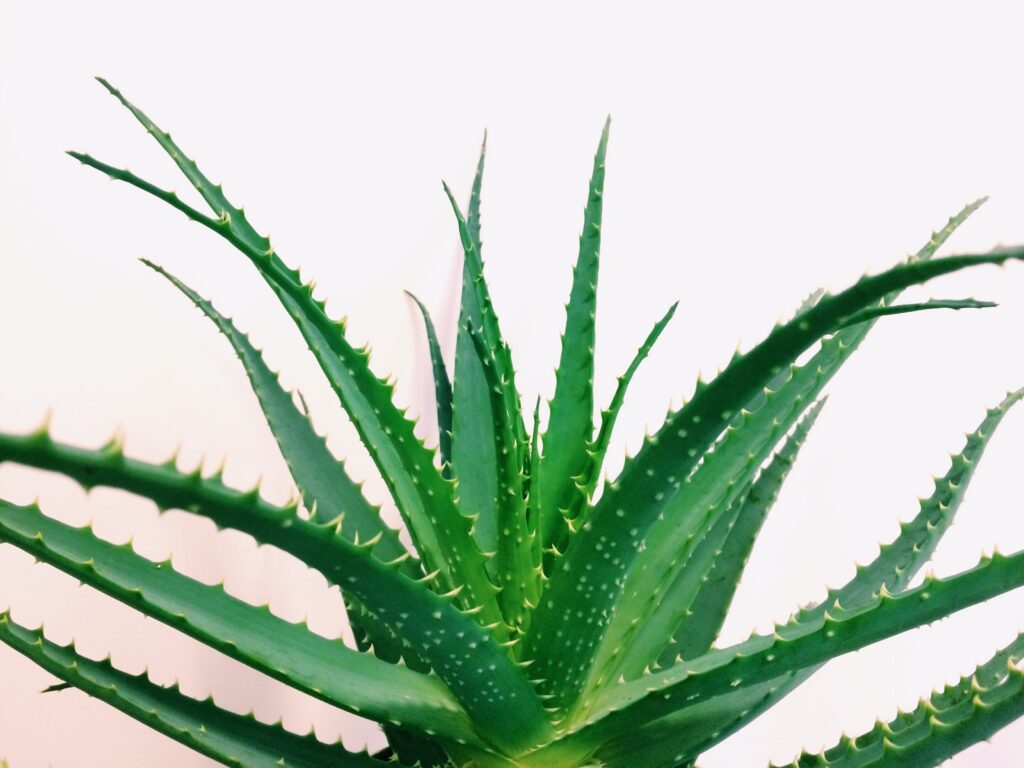
Aloe vera is a tropical succulent plant that is native to Africa and the Arabian Peninsula. It is a hardy plant that can survive in a wide range of temperatures, but it does have some temperature limitations.
The ideal temperature range for aloe vera is between 55°F and 80°F (13°C and 27°C). This makes aloe vera an ideal houseplant. When the temperature starts to drop below 50°F (10°C) during winter, your aloe plant can start to struggle. These plants naturally retain plenty of water, making them intolerant to freezing temperatures.
Aloe vera can tolerate temperatures outside the ideal range but may struggle if exposed to long periods below 50°F (10°C). In the US, aloe vera plants thrive in USDA Hardiness Zones 8 to 11. As part of the succulent family, aloe vera can tolerate long drought periods. But when it comes to temperature, it won’t handle cold.
If you live in a place where the summer temperatures can easily reach or surpass 80°F (27°C), keep a close eye on your plant during the warm season and water frequently. High temperatures can cause the soil to dry out faster, so make sure to keep the soil moist.
Aloe Vera in Cold Weather
Aloe vera is a hardy plant that can survive in a variety of temperatures, but it is not immune to cold weather. Aloe vera plants are native to tropical and semi-tropical climates, so they are not adapted to survive extreme cold.
When the temperature drops below 40°F, aloe vera plants may suffer from cold damage resulting in wilting of the plant. Most species of aloe vera cannot survive temperatures below 25ºF for several hours. If the temperature falls below that, the plant will likely suffer from freeze damage, causing it to die if left in the extreme cold for too long.
To protect aloe vera plants from cold temperatures, it is important to take steps to keep them warm. Gardeners can cover the plants with blankets or frost cloths to protect them from frost damage. A layer of mulch around the base of the plant can also help to insulate the roots and keep them warm.
In USDA hardiness zones 10 through 12, where the temperature rarely drops below 30°F, aloe vera plants can be grown outdoors year-round. In colder climates, aloe vera plants can be grown indoors or in a greenhouse to protect them from the cold.
If an aloe vera plant does suffer from cold shock or freeze damage, it is important to remove any damaged leaves and wait to see if the plant recovers. In some cases, the plant may grow new leaves and recover from the damage. In other cases, the damage may be too severe, and the plant may die.
Aloe Vera Care in Summer
Aloe vera is a succulent plant that can tolerate a wide range of temperatures. However, during the summer months, it is important to keep a close eye on your aloe vera plant to ensure it stays healthy and happy.
Care
During the summer, aloe vera plants require more frequent watering than during other seasons. It is important to keep the soil moist but not waterlogged. Overwatering can lead to root rot, which can be fatal to your plant.
Direct Sunlight
Aloe vera plants love bright, indirect sunlight. However, during the summer months, it is important to protect your plant from the intense midday sun. Direct sunlight can cause sunburn, which can damage the leaves of your plant.
Protect Aloe Vera from Frost
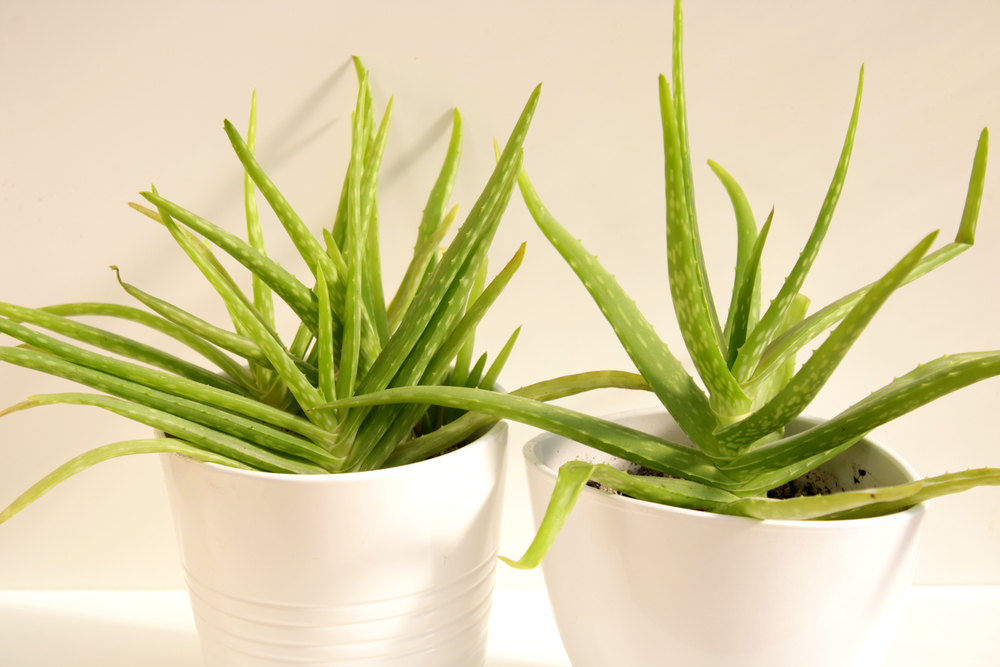
While aloe vera can tolerate cold temperatures, it is not frost-resistant and should be protected from freezing conditions. If the plant does freeze, the leaves will turn brown and mushy. With proper care, however, aloe vera can thrive in cooler climates.
Sunburns
If your aloe vera plant does get sunburned, don’t worry! The plant will recover on its own. However, to prevent future sunburns, it is important to move your plant to a shadier location or provide it with some shade during the hottest part of the day.
Indoor Aloe Vera Care
Aloe vera is a popular indoor plant that is easy to care for and adds a touch of greenery to any household. When it comes to indoor aloe vera care, it is important to consider factors such as temperature, drafts, and air conditioning.
Aloe vera plants prefer warm temperatures and can tolerate a range of temperatures between 55 and 80 degrees Fahrenheit or 13 and 27 degrees Celsius.
However, they cannot endure cold temperatures and frost. The ideal temperature range for aloe vera plants is between 55-80°F, but they can tolerate temperatures as low as 40°F (4°C) for short periods.
Drafts can also be harmful to aloe vera plants. Cold drafts can cause the leaves to turn brown and dry out. It is best to keep aloe vera plants away from windows and doors where drafts are common. If the plant is near a drafty area, it can be protected by placing it in a location where it is shielded from the draft, such as behind a curtain.
Air conditioning can also affect aloe vera plants. Air conditioning can cause the air to become dry, which can lead to the leaves drying out and turning brown.
It is best to keep aloe vera plants away from air conditioning vents. If the plant is near an air conditioning vent, it can be protected by placing a tray of water nearby to help humidify the air.
Aloe Vera Health and Recovery
Aloe vera plants are known for their health benefits and their ability to tolerate a range of temperatures. However, they can still suffer from stress, dehydration, and other issues that can cause their leaves to turn brown or black.
In this section, we will discuss how to keep your aloe vera plant healthy and how to help it recover from any issues it may encounter.
One of the most important things to keep in mind when caring for your aloe vera plant is to avoid overwatering it. Aloe plants are succulents, which means that they store water in their leaves and roots.
If they are watered too frequently, their roots can become waterlogged, which can lead to rot and other issues. To avoid this, it’s important to let the soil dry out completely between waterings.
In addition to avoiding overwatering, it’s also important to make sure that your aloe vera plant is getting enough light. Aloe plants thrive in bright, indirect sunlight, but they can also tolerate some shade. If your plant is not getting enough light, its leaves may turn brown or black, which can be a sign of sunburn or other issues.
If your aloe vera plant does suffer from brown or black leaves, it’s important to take action to help it recover. First, you should remove any brown or black leaves to prevent them from spreading the issue to healthy leaves. You should also make sure that your plant is getting enough rest and that it is not under any unnecessary stress.
To help your aloe vera plant recover from dehydration or other issues, you can give it a little extra water and make sure that it is getting enough nutrients.
You can also use aloe vera gel or other products to help soothe burns or other injuries. With a little care and attention, your aloe vera plant can thrive and provide you with a range of health benefits.
Growing and Fertilizing Aloe Vera

Aloe Vera is a succulent plant that is easy to grow and care for. It is a great houseplant that can thrive in a variety of conditions, making it a popular choice for many gardeners. Here are some tips for growing and fertilizing Aloe Vera.
Growing Aloe Vera
Aloe Vera is a hardy plant that can grow in a variety of conditions. It prefers well-draining soil and bright, indirect light. It is important not to overwater Aloe Vera, as it can lead to root rot. Allow the soil to dry out completely between waterings.
Aloe Vera can be grown from seeds or offsets. Offsets are small plants that grow from the base of the parent plant. They can be removed and planted in their own pot. Aloe Vera can also be propagated by leaf cuttings. Simply cut a leaf from the parent plant, let it dry out for a few days, and then plant it in soil.
Fertilizing Aloe Vera
Aloe Vera is a low-maintenance plant that does not require frequent fertilization. However, it can benefit from occasional feeding. Aloe Vera is adapted to very poor desert soils and can survive with very little in the way of nutrients, but that doesn’t mean it won’t benefit from the occasional feeding.
Aloe Vera can be fertilized with a balanced, water-soluble fertilizer. It is important not to over-fertilize Aloe Vera, as it can lead to burned roots. Aloe Vera should be fertilized once every two to three months during the growing season, which is typically from spring to fall.
Some gardeners prefer to use organic fertilizers, such as compost or worm castings, to feed their Aloe Vera. These natural fertilizers can provide a slow-release source of nutrients that can benefit the plant over time.
Special Care for Aloe Vera
Aloe vera is a low-maintenance plant that can thrive in various environments. However, it requires special care to survive in cold temperatures. Here are some tips to help your aloe vera plant survive the winter:
Move the Plant
If you live in a region with cold winters, you should move your aloe vera plant indoors. Aloe vera is a houseplant that can adapt to indoor conditions. However, it requires bright, indirect sunlight to grow well. Therefore, you should place your aloe vera plant near a window that receives plenty of natural light.
Acclimate the Plant
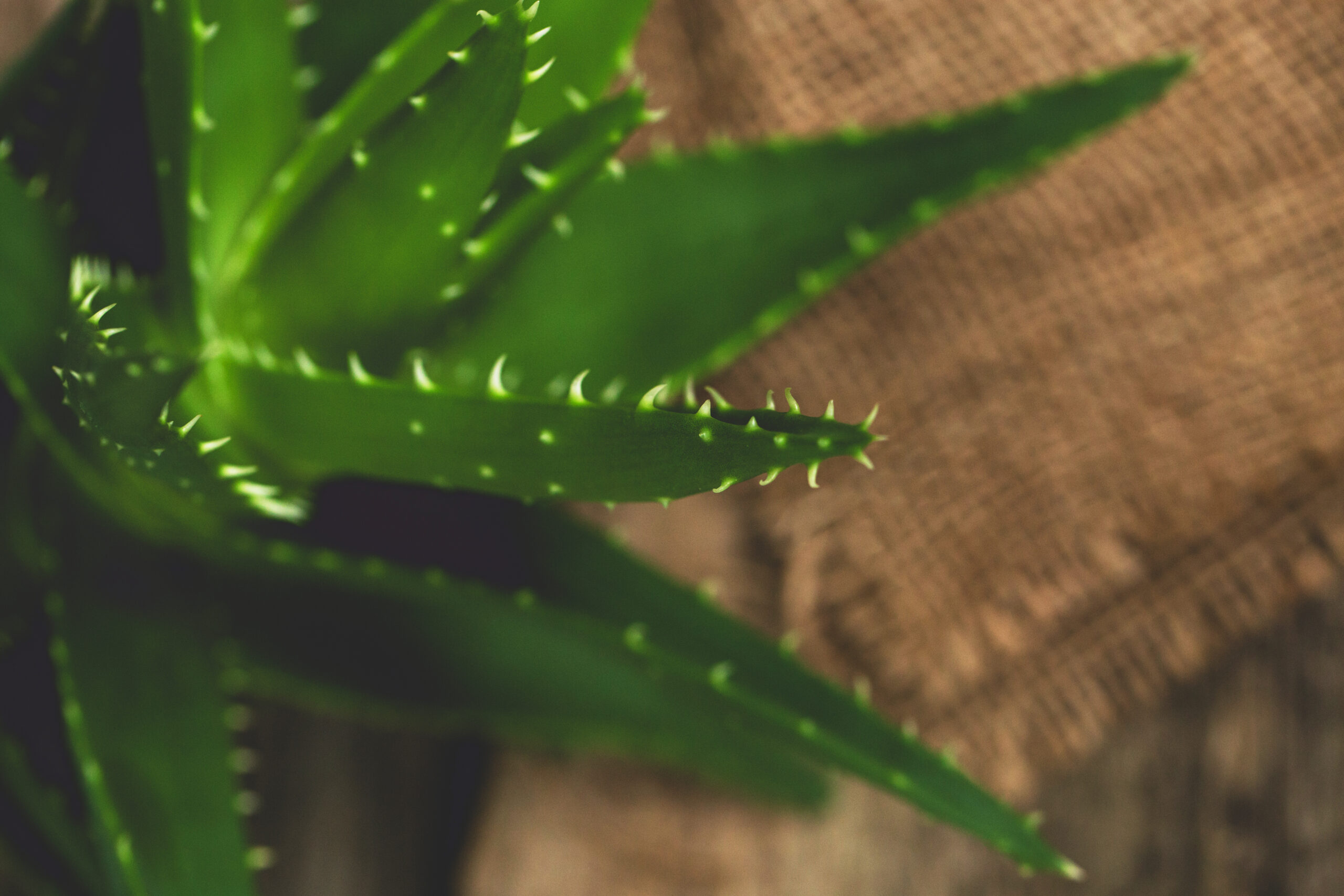
When you move your aloe vera plant indoors, you should acclimate it gradually. Aloe vera is sensitive to sudden changes in temperature and humidity. Therefore, you should place your plant in a shaded area for a few days before moving it to a brighter location.
Also, you should avoid exposing your plant to dry air from heating systems.
Reduce Watering Frequency
During the winter, aloe vera plants grow slower and require less water. Therefore, you should reduce the watering frequency to prevent overwatering. Overwatering can cause root rot, which can kill your plant. You should water your aloe vera plant only when the soil is completely dry.
Prune Damaged Leaves
If your aloe vera plant is exposed to cold temperatures, the leaves may turn brown or mushy. In this case, you should prune the damaged leaves to prevent further damage. However, you should avoid pruning healthy leaves, as they are essential for the plant’s survival.
Grow Pups
Aloe vera plants produce “pups,” or small offsets, that can be used to grow new plants. You can remove the pups from the mother plant and plant them in a separate container. This will not only help you propagate your plant but also ensure that you have a backup if the mother plant dies.
Aloe Vera and Temperature Extremes
Aloe vera plants are known for their hardiness and ability to survive in a range of temperatures. However, they do have limits when it comes to temperature extremes. In general, aloe vera plants prefer temperatures between 50°F and 75°F.
If the temperature drops below 50°F for prolonged periods, aloe vera plants can suffer from frost damage and hard freeze. This can cause the leaves to turn brown or black and become mushy. In severe cases, the entire plant may die.
Therefore, it is important to protect the plant from cold temperatures by moving it indoors or providing a heat source such as a space heater or heat lamp.
On the other hand, aloe vera plants can also suffer from heat stress if exposed to high temperatures for prolonged periods. When the temperature exceeds 90°F, the plant may start to develop mushy leaves. In this case, it is important to move the plant to a cooler location or provide shade.
Location is also an important factor when it comes to the temperature tolerance of aloe vera plants. In general, aloe vera plants prefer a location with bright, indirect sunlight.
However, they can also tolerate some direct sunlight, especially in cooler temperatures. If the plant is exposed to too much direct sunlight in hot temperatures, it may suffer from sunburn and become discolored.
To help the aloe vera plant survive in colder temperatures, it is recommended to add a layer of gravel around the base of the plant. This will help to insulate the roots and protect them from the cold.
Additionally, it is important to make sure the soil is well-draining to prevent water from accumulating around the roots and causing them to rot.
Frequently Asked Questions
What temperature is too cold for an Aloe plant?
Aloe vera plants are native to warm and dry climates, which means they are not frost-tolerant. The ideal temperature range for Aloe vera is between 50-75°F (10-24°C). Temperatures below 40°F (4.4°C) can damage the plant, and temperatures below 32°F (0°C) can kill it.
At what temperature should I bring my Aloe plant inside?
It is recommended to bring your Aloe vera plant inside when temperatures drop below 50°F (10°C). If you live in an area with cold winters, it is best to keep your Aloe vera plant indoors year-round.
What happens if my Aloe plant gets too cold?
If an Aloe vera plant is exposed to cold temperatures, it can suffer from cold damage. The leaves may turn brown or black and become mushy. In severe cases, the plant may die. To avoid cold damage, it is important to protect the plant from freezing temperatures.
How cold can Snake plants tolerate?
Snake plants, also known as Sansevieria, are more cold-tolerant than Aloe vera plants. They can tolerate temperatures as low as 50°F (10°C) for short periods of time. However, it is still best to keep them in temperatures above 60°F (15°C).
Can Aloe vera plants survive cold weather?
Aloe vera plants can survive cold weather if they are protected from freezing temperatures. If temperatures drop below 32°F (0°C), the plant may freeze and die. To protect your Aloe vera plant during cold weather, move it indoors or cover it with a frost cloth or blanket.
How to protect Aloe vera plants in winter?
To protect Aloe vera plants in winter, it is important to keep them in temperatures above 50°F (10°C). If temperatures drop below this, move the plant indoors or cover it with a frost cloth or blanket. Reduce watering during winter, as the plant will not need as much water in cooler temperatures.

Hey, I’m Lisa and I’ve been an avid gardener for over 30 years. I love writing, talking and living in the garden! Feel free to connect with me on my socials below

